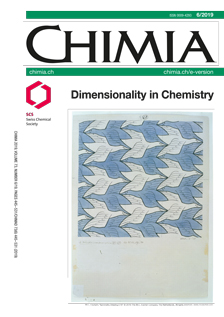Interfacial Synthesis of Structurally Defined Organic Two-dimensional Materials: Progress and Perspectives
DOI:
https://doi.org/10.2533/chimia.2019.480PMID:
38549210Keywords:
2d polymers, Air–water interface, Liquid–liquid interface, Metal-organic framework, Organic 2d materialsAbstract
In the last decade, the development of thin-layer organic 2D materials has attracted considerable attention due to their unique properties arising from 2D planar structures and versatility of organic chemistry. Several synthetic strategies have been developed to synthesize organic 2D materials, such as 2D polymers, 2D supramolecular polymers as well as single/thin-layer 2D covalent organic frameworks and metal-organic frameworks, either by top-down exfoliation or bottom-up interfacial synthesis methods. Among these, the liquid interface offers a flat and uniform surface for a 2D confinement which renders the preparation of organic 2D materials on a large area under ambient conditions. This review article summarizes the recent developments on the interfacial synthesis of single-layer and few-layer organic 2D materials involving polymerization at the air–water interface by the Langmuir-Blodgett method and at liquid–liquid interfaces. Insights into the perspectives and challenges of synthetic strategies as well as structural characterization are provided for the future development of organic 2D materials.Downloads
Published
2019-07-26
Issue
Section
Scientific Articles
License
Copyright (c) 2019 Swiss Chemical Society

This work is licensed under a Creative Commons Attribution-NonCommercial 4.0 International License.
How to Cite
[1]
H. Sahabudeen, R. Dong, X. Feng, Chimia 2019, 73, 480, DOI: 10.2533/chimia.2019.480.







